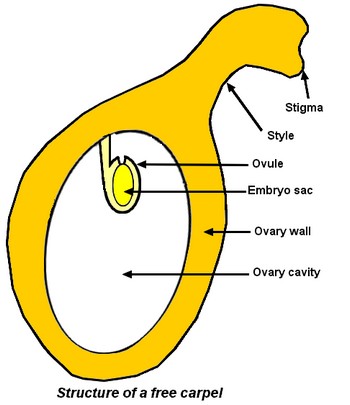A good understanding of carpel organisation is imperative to analyse transformations that occur in an Angiosperm flower after fertilisation to obtain a fruit. A carpel is made of the 3 following parts: – a stigma, a wet surface with papillate cells, that is adapted for the reception and germination of pollen (see pages on pollen), – a style, more or less developed. The pollen tube grows between its cells during the pollen germination (see pages on pollen germination), – and, an ovary, the hollow and basal part of the carpel that contains inside its cavity an ovule (see pages on ovule). Inside ovule, there is the embryo sac (see pages on embryo sac). 